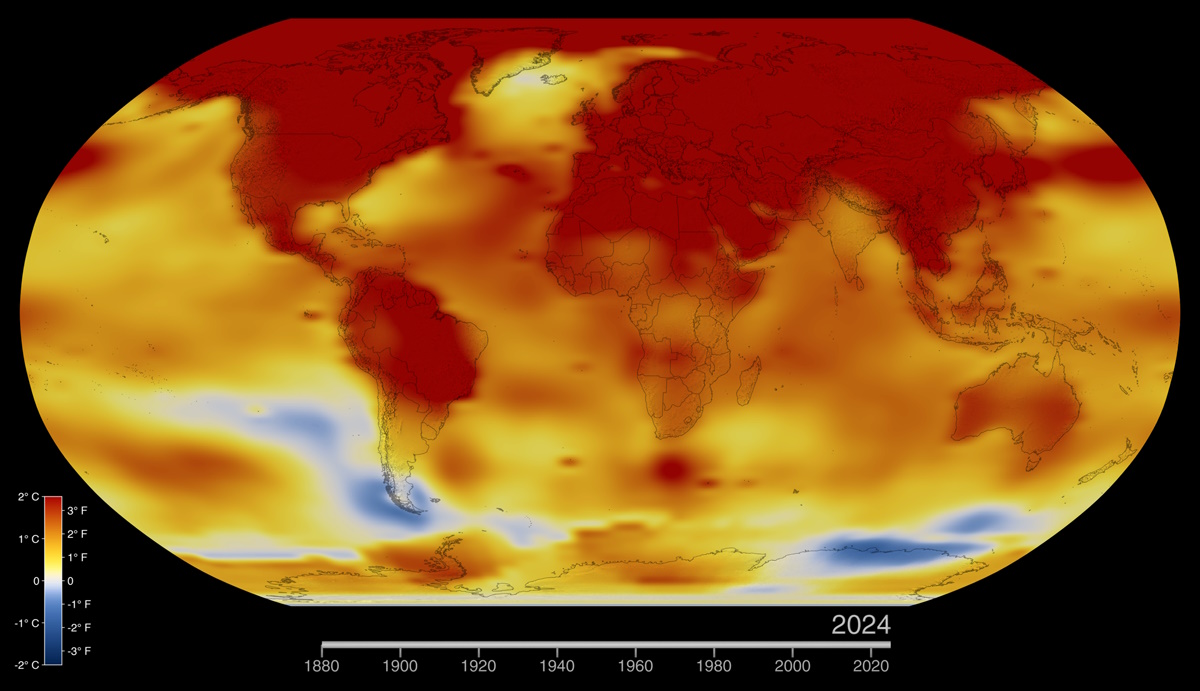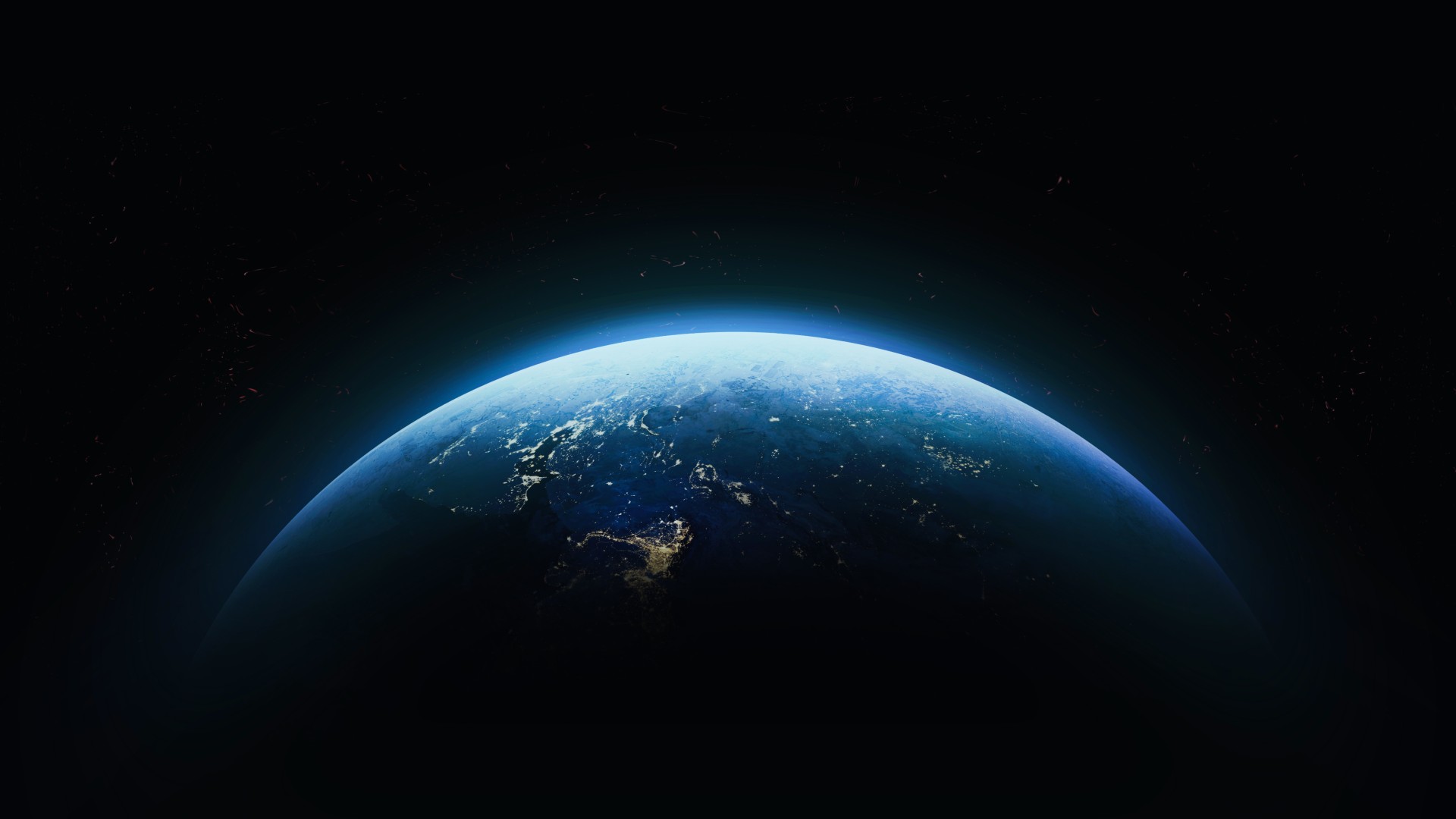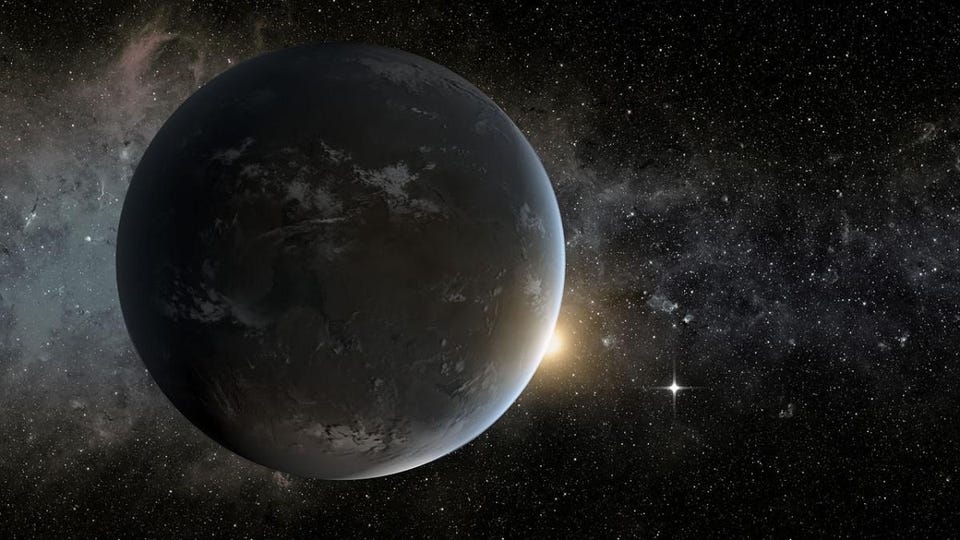Earth’s night skies aren’t black at all
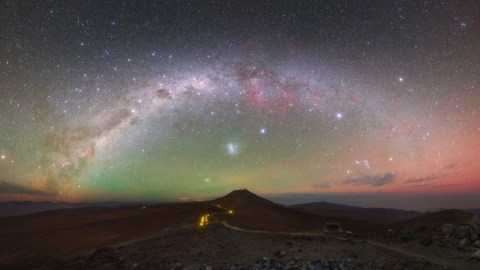
The darkness we see from Earth can never be 100% dark.
“All I want is blackness. Blackness and silence.” –Sylvia Plath
If you take a look at the night sky from an extremely dark sky location, away from all the city lights, street lights, squid fisheries and other sources of human-caused light pollution, you’ll be treated to one of nature’s most spectacular sights: the view of outer space itself. We think of space as the blackest thing there is, as though it’s the absence of all forms of light whatsoever. As far as visible light goes, the Hubble space telescope represents our best view into the dark, distant Universe. The longest it ever looked at any one region of space was for a total of 23 days. When it did that, here’s what it found.
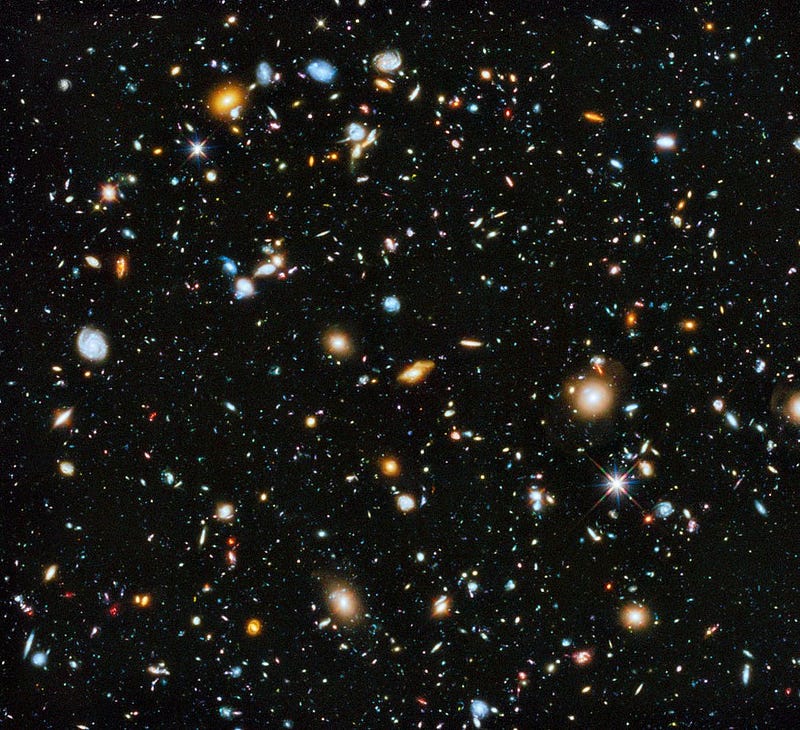
Sure, you might look at an image like this and see the brilliant galaxies and their stars from so long ago, and think that if only we could see even farther, perhaps the entire sky would be filled in with sources of light. But that’s not the case at all! The Universe is limited in terms of the amount of “stuff” observable to us, as we can only see as far back as the Big Bang and as light has traveled in the 13.8 billion years since. There might be hundreds of billions of galaxies in the Universe, but spread out over a sphere 46 billion light years in radius, there are going to be many gaps from our line-of-sight. And the Universe wasn’t born with galaxies at all; it took at least hundreds of millions of years for the first ones to form.
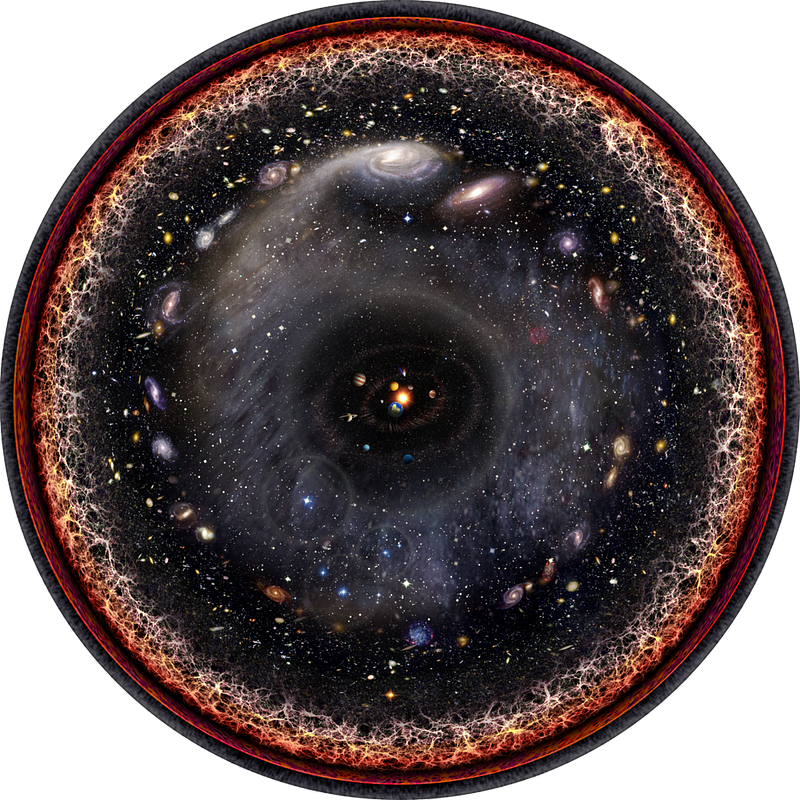
In other words, there’s a limit to what any telescope, in principle, can see. But the spaces between those galaxies — at least to ultraviolet, visible and infrared eyes (the type of light produced by stars) — is truly black. But only, that is, if you view it from space. The spectacular image gracing the top of this article was taken by Yuri Beletsky at the European Southern Observatory, and showcases just how colorful the skies of Earth truly are. Some of what you see is intuitive, while other portions may be quite surprising, and they rely on some intricate physics. Yet that single image encapsulates a whole slew of reasons why the Earth’s night sky is never completely dark.
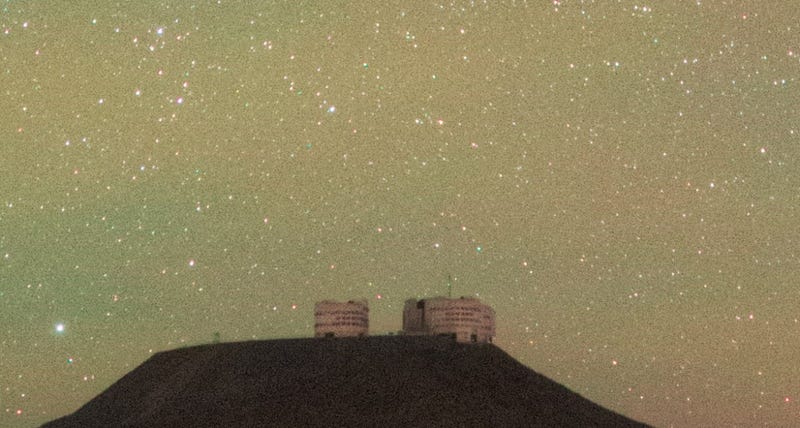
Low on the horizon, there’s a faint yellowish glow that can be seen from most locations on Earth. This is mostly due to human activity, and to the lights we’ve installed to help illuminate our cities at night. Even at a pristine dark sky location, like high up in the Andes in Chile, this faint, remote light pollution shows up on the horizon, and taints the blackness of the sky.
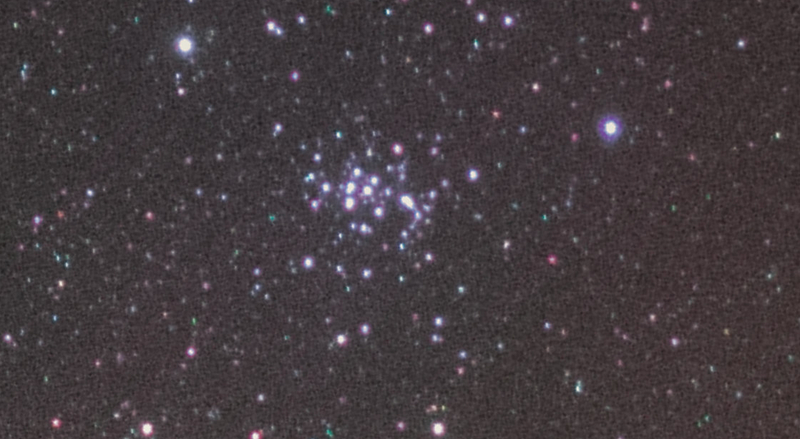
Another source of light is the stars in our sky itself. Although, as seen from Earth, there are only perhaps a few thousand stars the human eye can perceive, this is enough light that even on a completely moonless night, there’s a residual amount of light pollution that comes courtesy of the sky itself. Just as the Sun’s indirect light shines through the Earth’s atmosphere, giving the sky its illuminated blue color, starlight can do this as well, although in a much more subdued fashion.
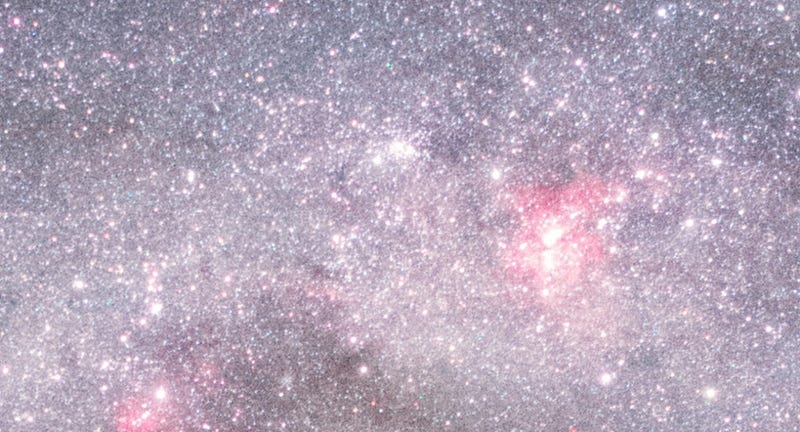
When the galaxy has risen, that too is a source of light in the night sky. Although the light from the Milky Way appears diffuse to human eyes, rather than point-like, it does more than travel in a straight line until it reaches your eyes. It also falls everywhere on the atmosphere of the Earth, where it can be scattered around, giving a faint “white light” effect to even the dark portions of the sky.
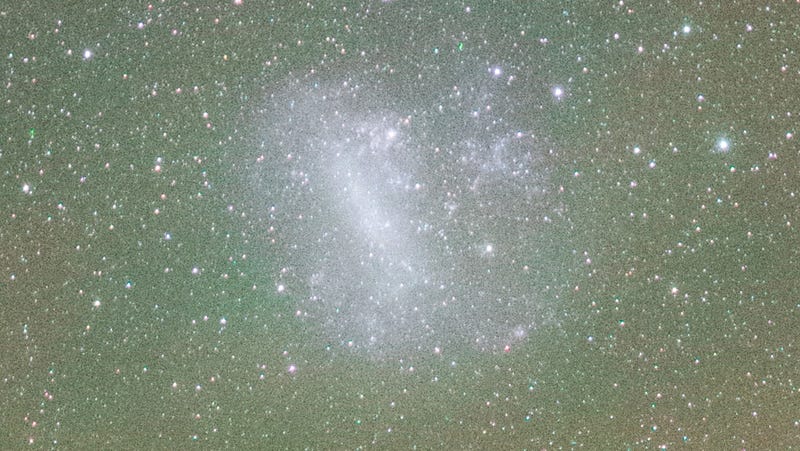
Additionally, other galaxies — also visible from Earth — play a role as well. While only a few other galaxies are visible to the naked eye, including Andromeda, Triangulum and the Large and Small Magellanic Clouds, even ones beyond the limit of human vision contribute to the overall sky brightness. This is true of stars beyond the limit of human vision as well; everything that emits light that impacts Earth gets diffused throughout the atmosphere, and can be detected by a sensitive enough camera. Although the Visible and Infrared Survey Telescope for Astronomy (VISTA) site by ESO is at an incredibly high altitude and has notoriously low turbulence in the atmosphere, it’s nothing at all like being in space, which is where you need to be for this effect to drop to zero.
And if you were in space, you could see what the astronauts aboard the international space station see: a combination of green (lower) and red (higher) “glows” coming from the highest reaches of the Earth’s atmosphere. This effect is known as airglow, and comes in a thin layer high above the portion of the atmosphere where any sorts of lifeforms reside. But from more than 100 kilometers up, this phenomenon can be seen from the ground with a sensitive enough piece of equipment.
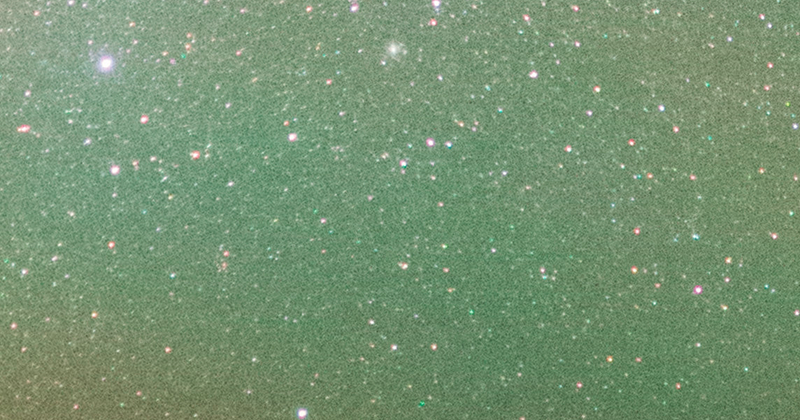
The Sun’s light isn’t just in the visible portion of the spectrum, but also includes ultraviolet light and solar wind particles that are capable of exciting and ionizing some of the atoms and molecules in the upper atmosphere. Over the course of the night, the ions and the electrons that were separated (or excited) get back together, and that causes the emission of light of particular frequencies. One of those frequencies — the strongest one in oxygen atoms — gives rise to green light, while at even higher altitudes, a different transition (mostly in hydrogen atoms) gives rise to a red airglow.
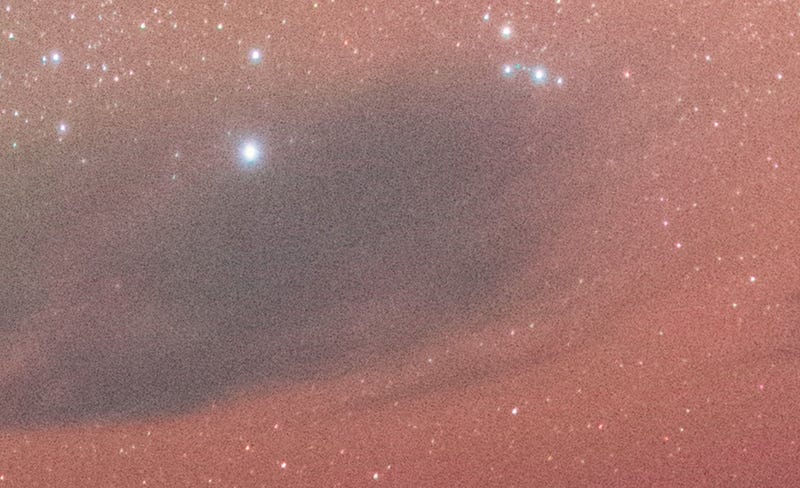
These glows are always present, and differ from place-to-place only in magnitude. And finally, there’s the effects of clouds. Although on a very dark night, the clouds may simply appear as blobs of darkness, they’re actually just as reflective as they are during the day. Out of all of the light shining on Earth, a portion will get reflected, and some of that light will re-reflect off the clouds, causing them all to appear illuminated from Earth.
While the depths of space where there are no stars or galaxies may truly be devoid of starlight, including ultraviolet, visible and near-infrared light, the sky as seen from Earth will never achieve true darkness. There’s a limit to darkness as we achieve it on Earth, and that’s one of the inevitable consequences of having our atmosphere. If you want the ultimate views of the Universe, you have to go to space!
This post first appeared at Forbes, and is brought to you ad-free by our Patreon supporters. Comment on our forum, & buy our first book: Beyond The Galaxy!
